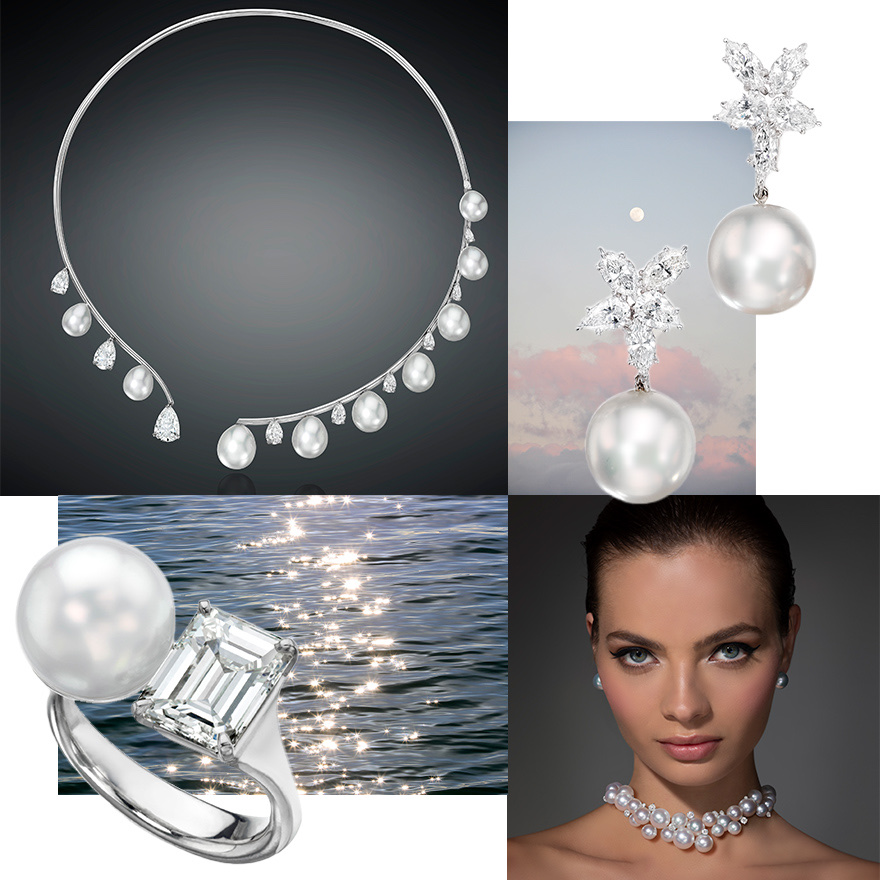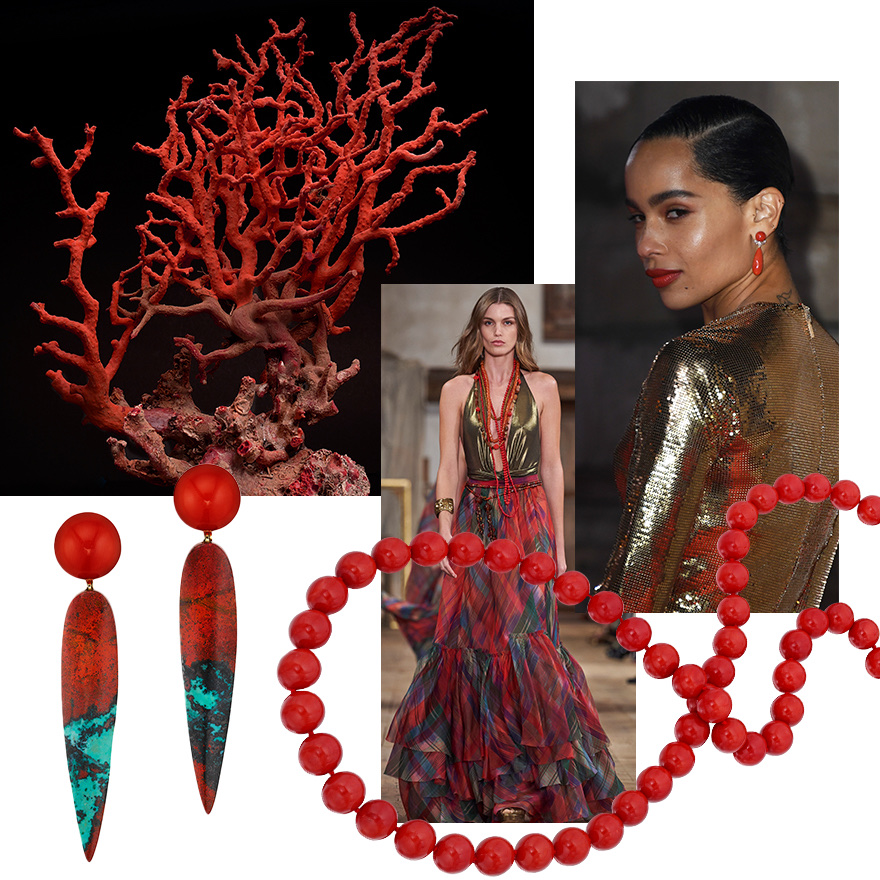
Stewards of the Sea – How Modern Pearl Farmers Are Protecting the Ocean
“Pearls just may be the most sustainable gems in the world” according to a recent article in Departures in June 2018. The journalist continued to explain. “You see, oysters need pristine water conditions to produce high-quality pearls. Any decline in water quality directly impacts oyster health, resulting in poorer pearl quality … Thus, pearl farmers are naturally also sea stewards in order to protect their investment.”
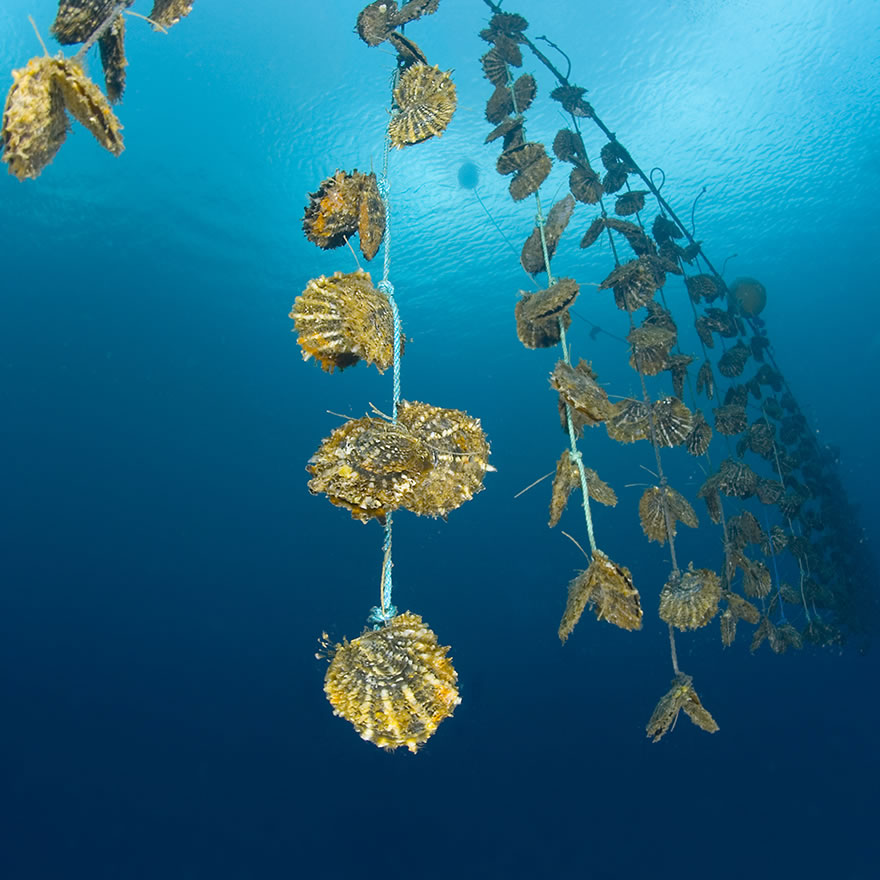
Oysters growing pearls in a pearl farm at J. Hunter Pearls Fiji.
While there is great debate about the far-reaching impact of global warming, one thing is clear. Those who make their livelihood from the sea have a vested interest in protecting its health. Healthier ocean conditions produce bigger and more valuable pearls with greater luster. In an interview with Robb Report, Christina Lang Assael, President & CEO of Assael, showed her passionate and ardent commitment to the world’s oceans. “When we abuse the balance of nature, we set off a chain reaction of change, to the detriment of the environment in which we live.” For this reason, Mrs. Assael is extremely selective about the suppliers of her magnificent pearls, opting to work exclusively with modern pearl farmers who produce beautiful gem pearls by protecting the ocean in which they grow.

Clockwise from left – pristine blue water of the sea, Assael Tahitian Pearl and Green Garnet Ring, a pearl farmer at J. Hunter Pearls Fiji deep sea diving to check health and status of pearl oysters
As part of the pearl cultivation practice, the oysters are routinely placed in baskets or nets so that they can live in the ocean and be carefully tended while the gem pearls grow inside them in their natural process. According to National Geographic, “pearl oysters live for a few years, which is plenty of time for marine organisms like barnacles and sponges to encrust on them. When that happens, oysters tend to make smaller pearls.” For this reason, pearl farmers regularly clean the oysters. Eco-conscious pearl farmers like Assael’s supplier of colorful Fiji Pearls, J Hunter, opt to move the oysters occasionally to shallower waters where fish will pick the oysters clean. This is a more natural cleaning process and enhances the health of the oyster, as well as the marine life in the ocean’s eco-system.
“When you buy a pearl, you should feel like you are investing in the world’s oceans and in the livelihood our planet,” says Justin Hunter, founder of J. Hunter Pearls Fiji and inspirational leader of The Blue Pledge movement (stay tuned for more information on the Blue Pledge coming soon).
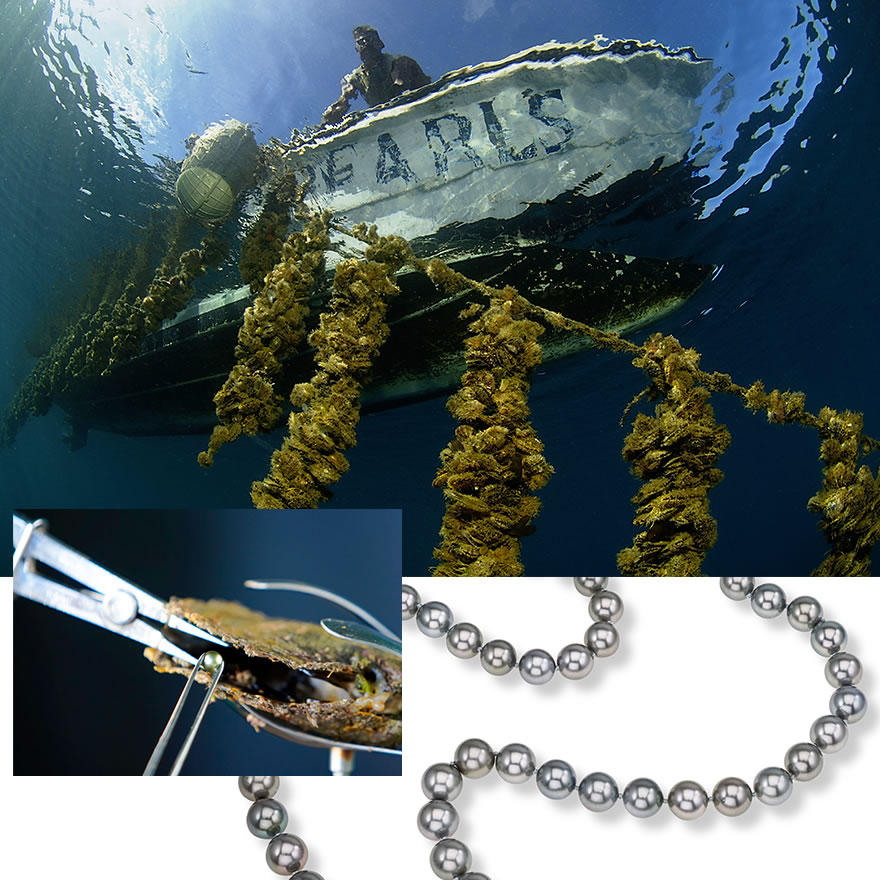
Clockwise from top – pearl farmer at J. Hunter Pearls Fiji in Savusavu Bay dropping oyster nets into shallower waters to allow a more natural cleaning process, Assael Tahitian pearl necklace, pearl being carefully extracted from an oyster
Unlike food oysters, which are often closely packed together allowing waste to build up, pearl oysters are spaced out so that their pearls will grow larger with greater luster. Further, scientists like Kent E Carpenter, a professor of biology at Old Dominion University in Virginia, recently found that pearl baskets or nets can be good for local fish populations “since they provide hiding spaces for small fish and some food in the form of encrusting organisms.”
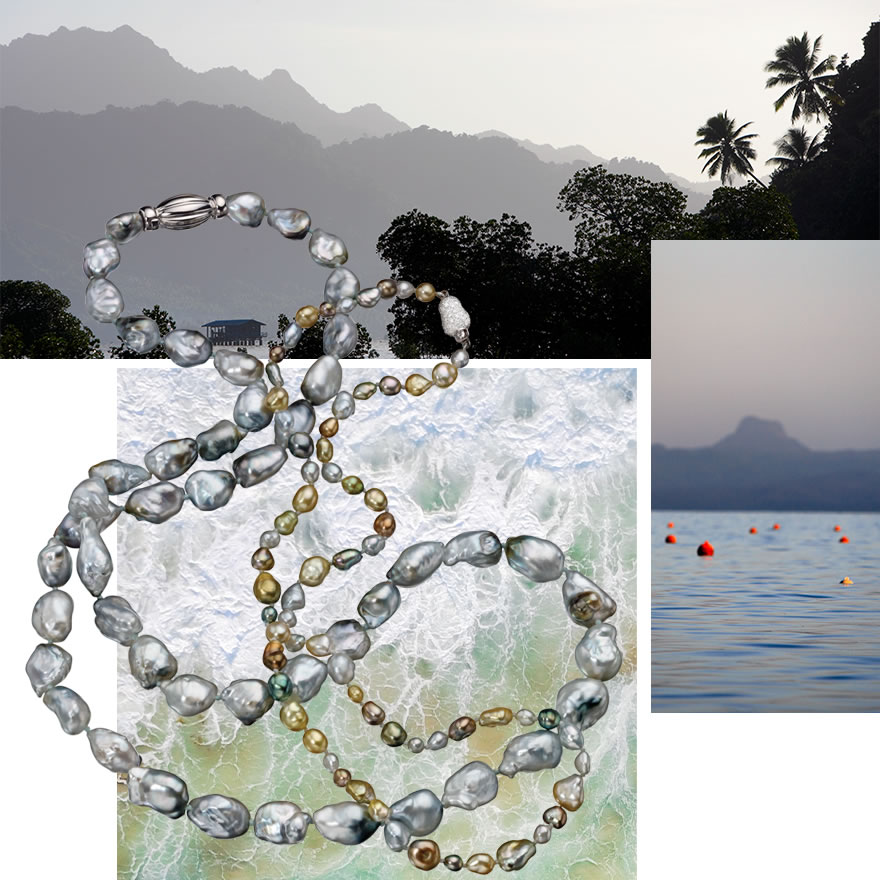
Clockwise from top – South Pacific flora and fauna, buoys floating along the waters of the sea around Fiji marking the location of oyster nets below, Assael Keshi Fiji Pearl Necklace and Baroque Fiji Pearl Necklace
Another National Geographic article even makes a case for oysters being the cleaners of the ocean – “oysters have been feeding on the excess nitrogen in the bay, put there in the last 200 years or so by deforestation and pollution.” Oysters are not able to help reduce the impact of man-made conditions like climate change, but pearl farmers are certainly doing their part to maintain healthier oceans. It is in every pearl farmer’s best interest to ensure that superlative pearls will continue to have that gorgeous luster we all know and love for many generations to come.
Posted on Oct 2, 2018 in Pearl Education by Duvall O'Steen
Articles you may also enjoy
Join our Mailing List
Join us for magnificent pearl trends and exclusive treasures. Discover a world that is truly ... beyond rare.

Feeling inspired?
Consider this your invitation to the House of Assael. Find your closest luxury jeweler using our map search and start your journey to timeless elegance.



